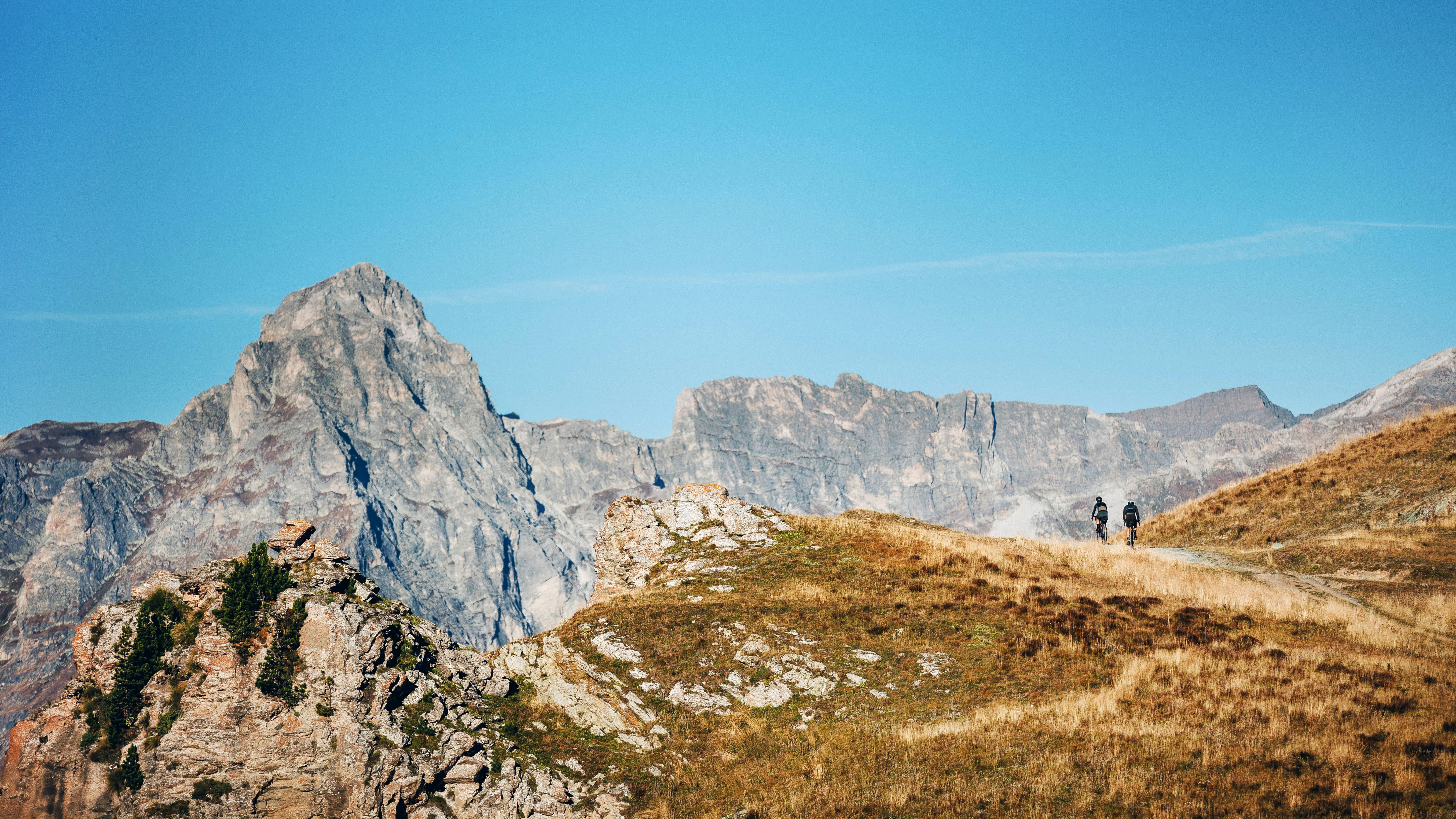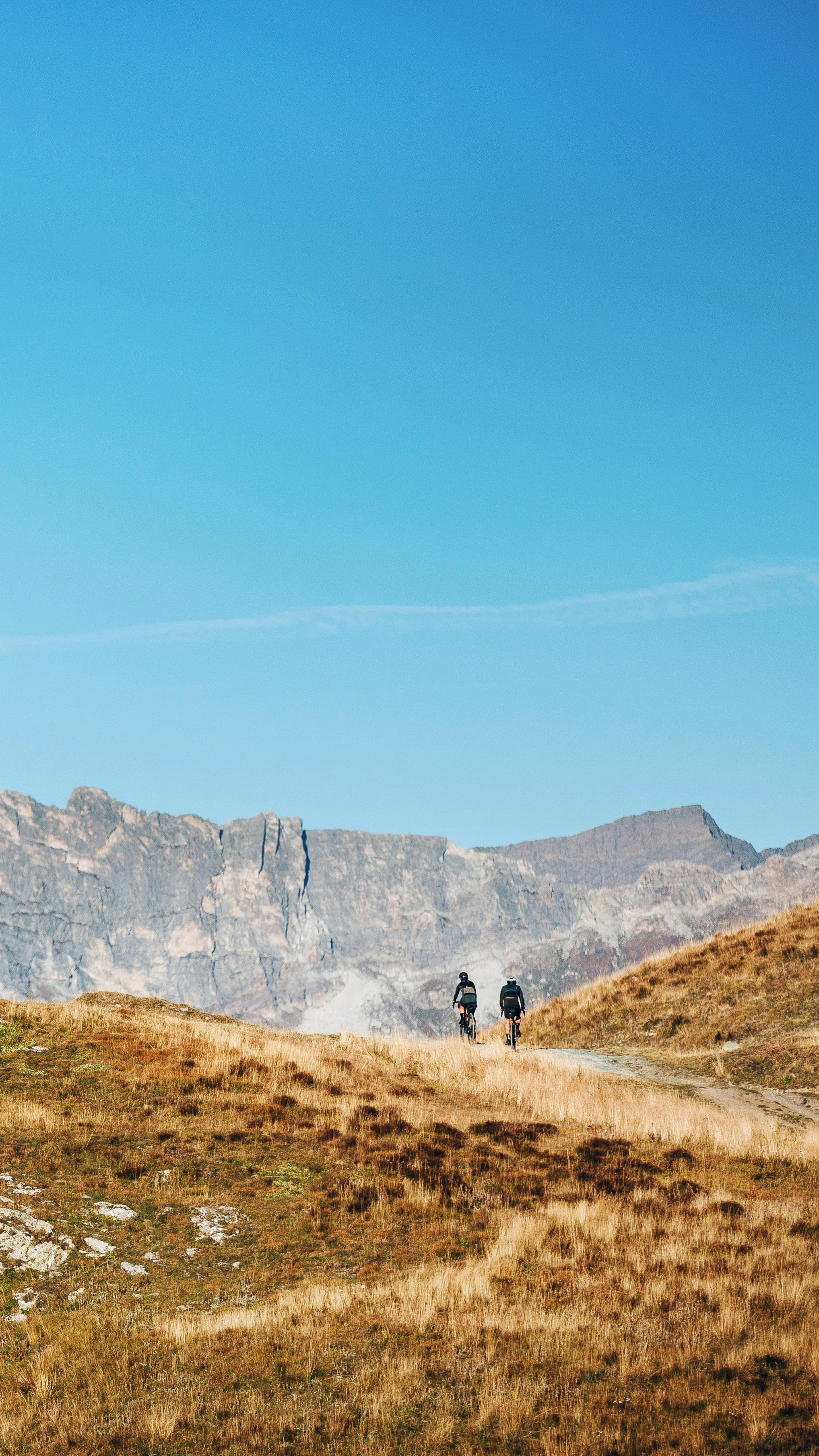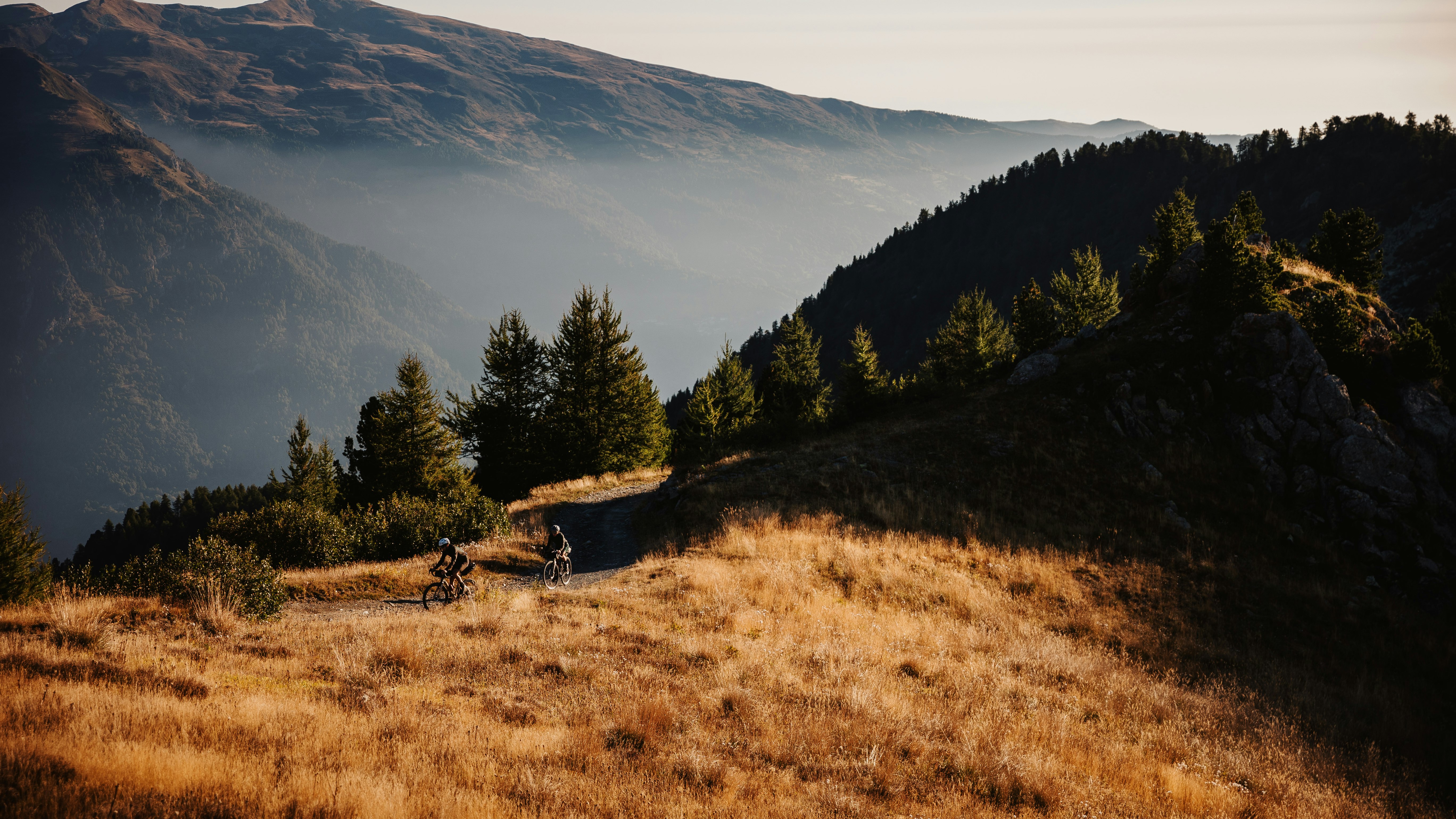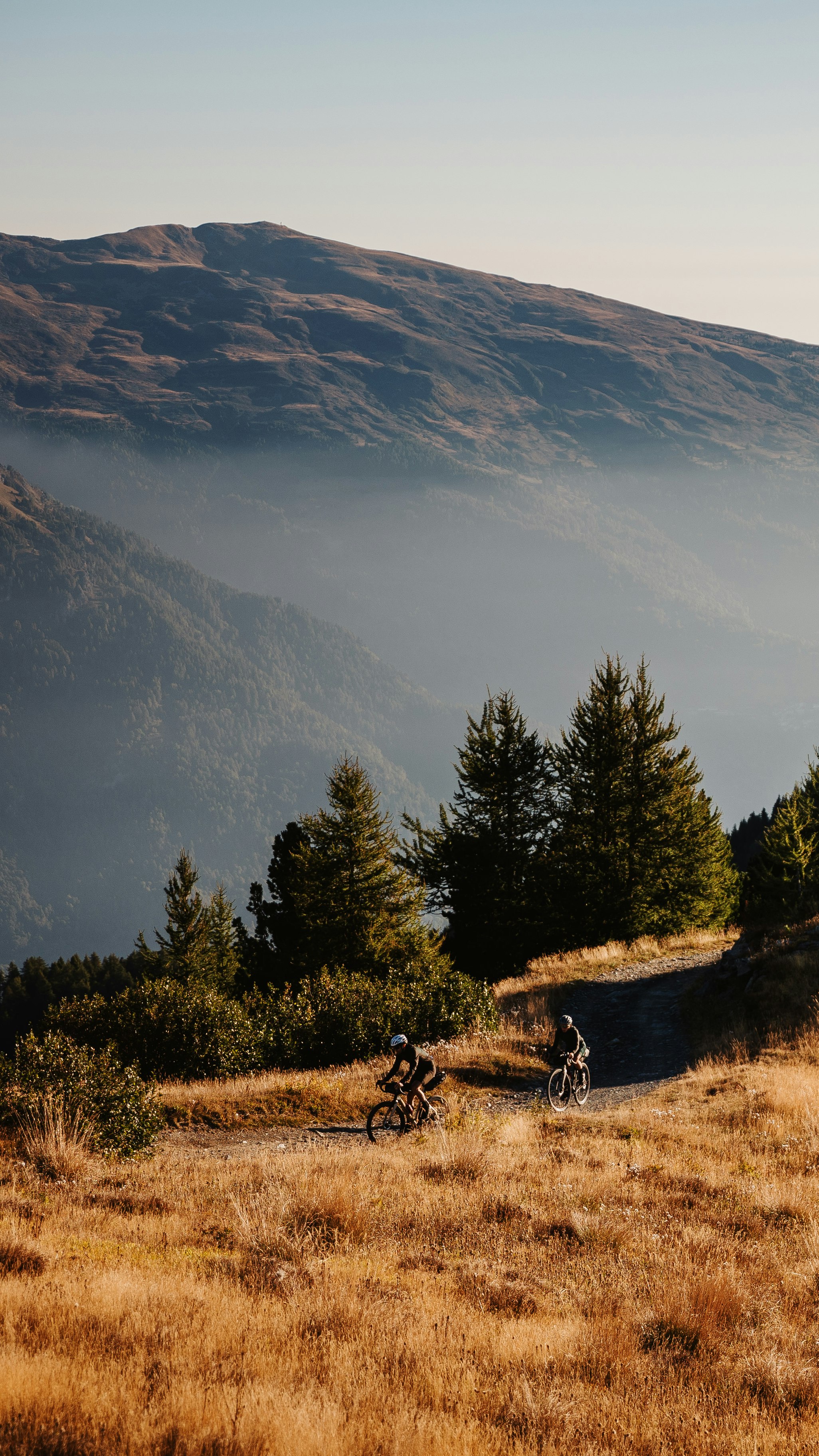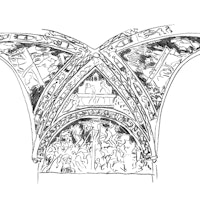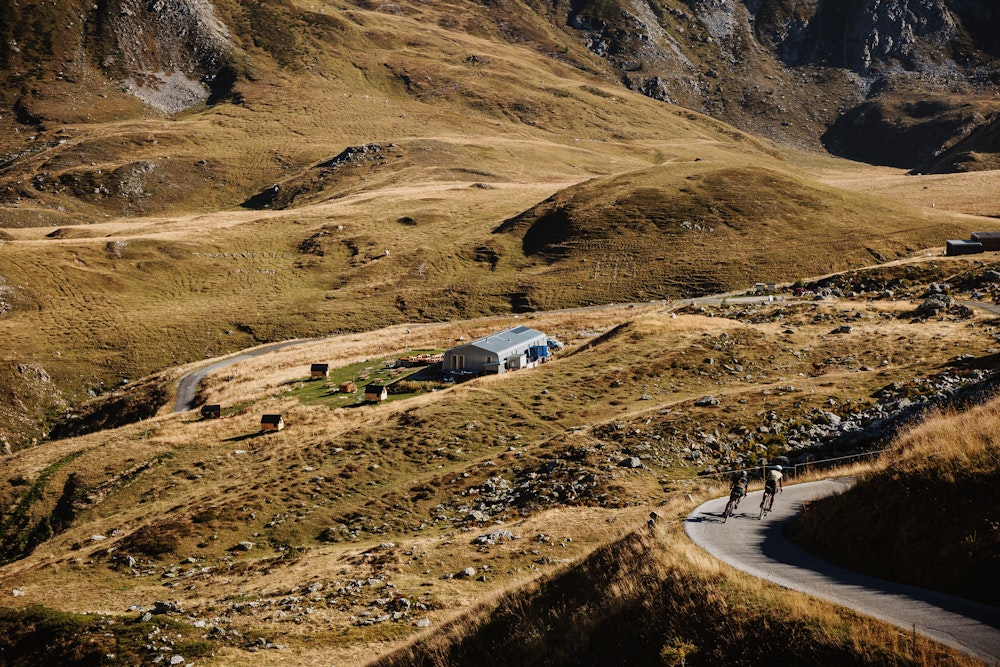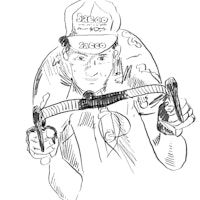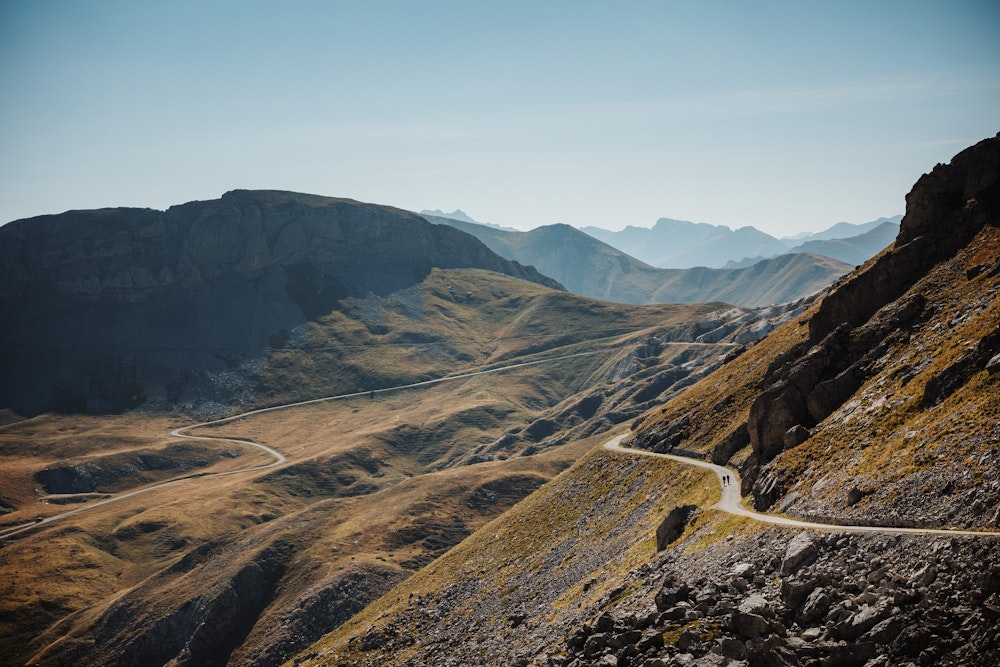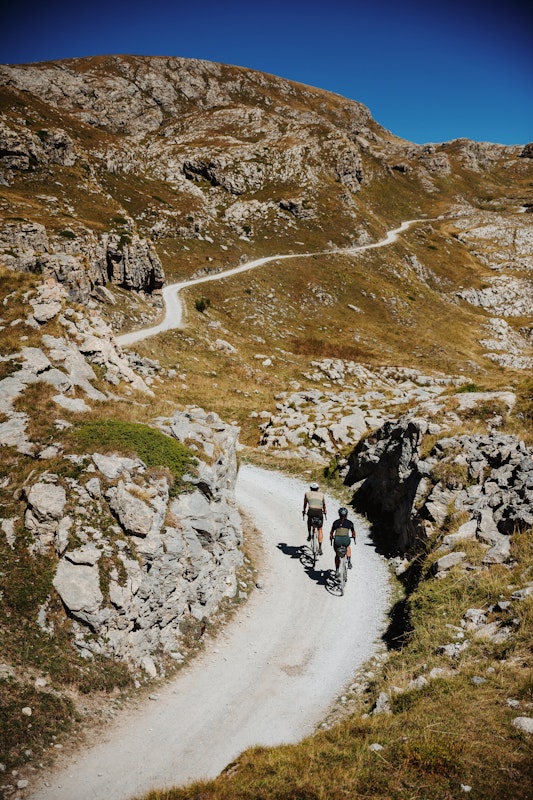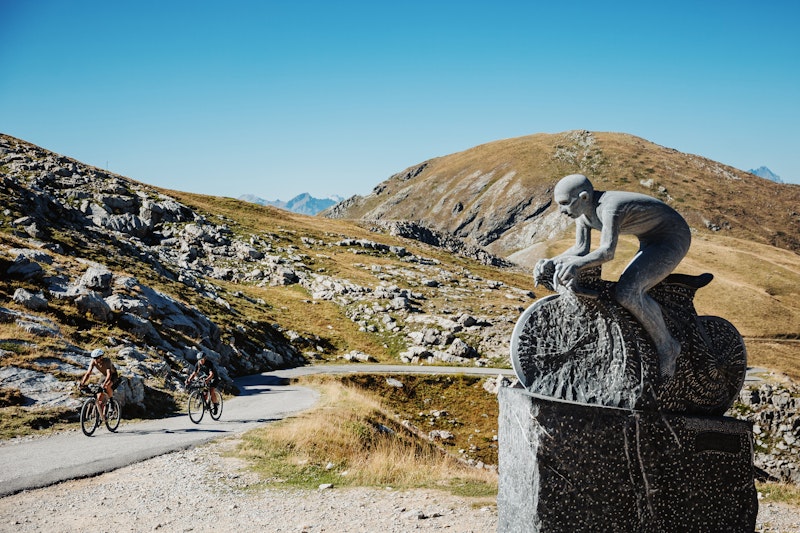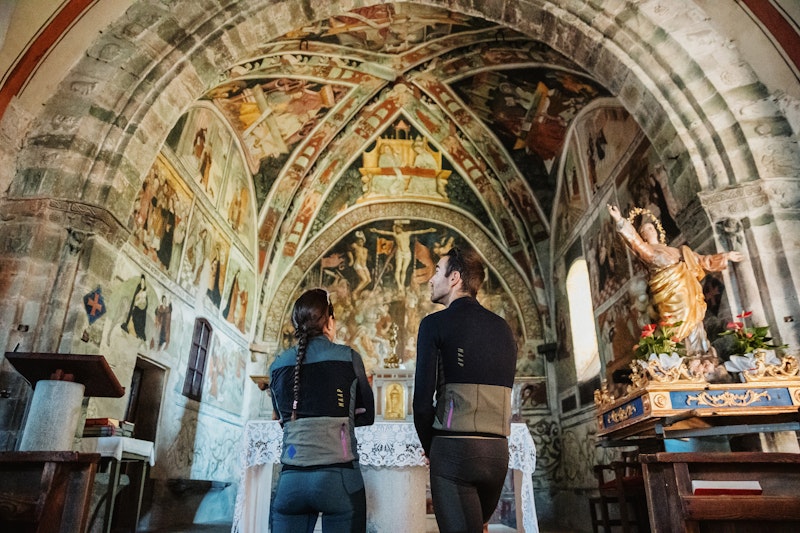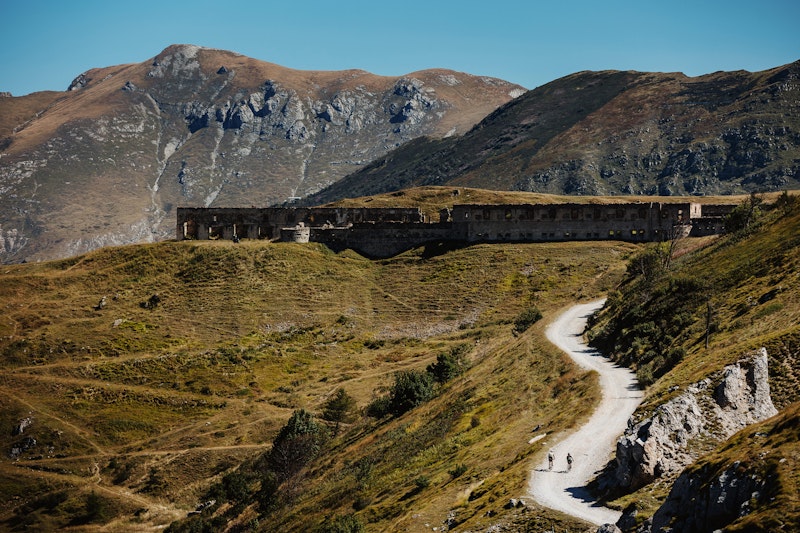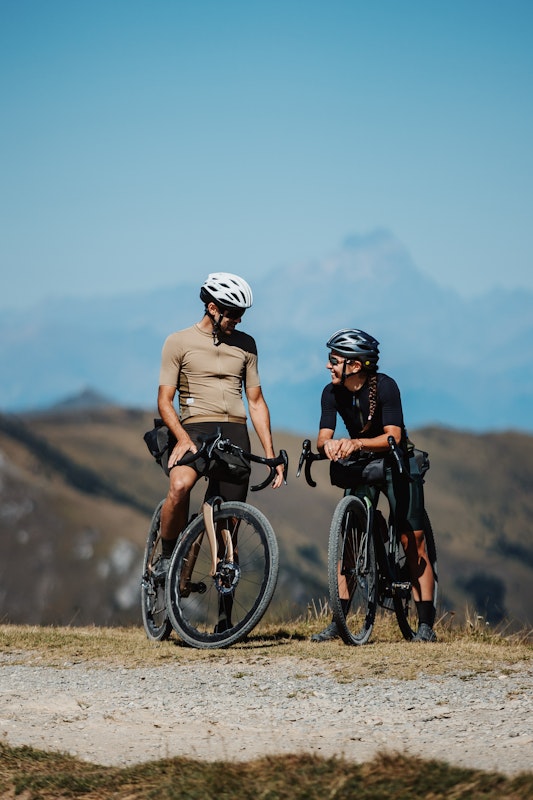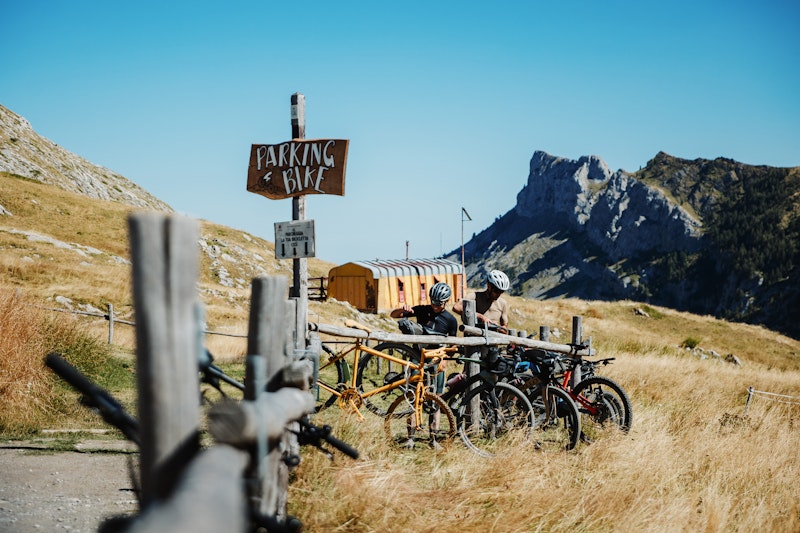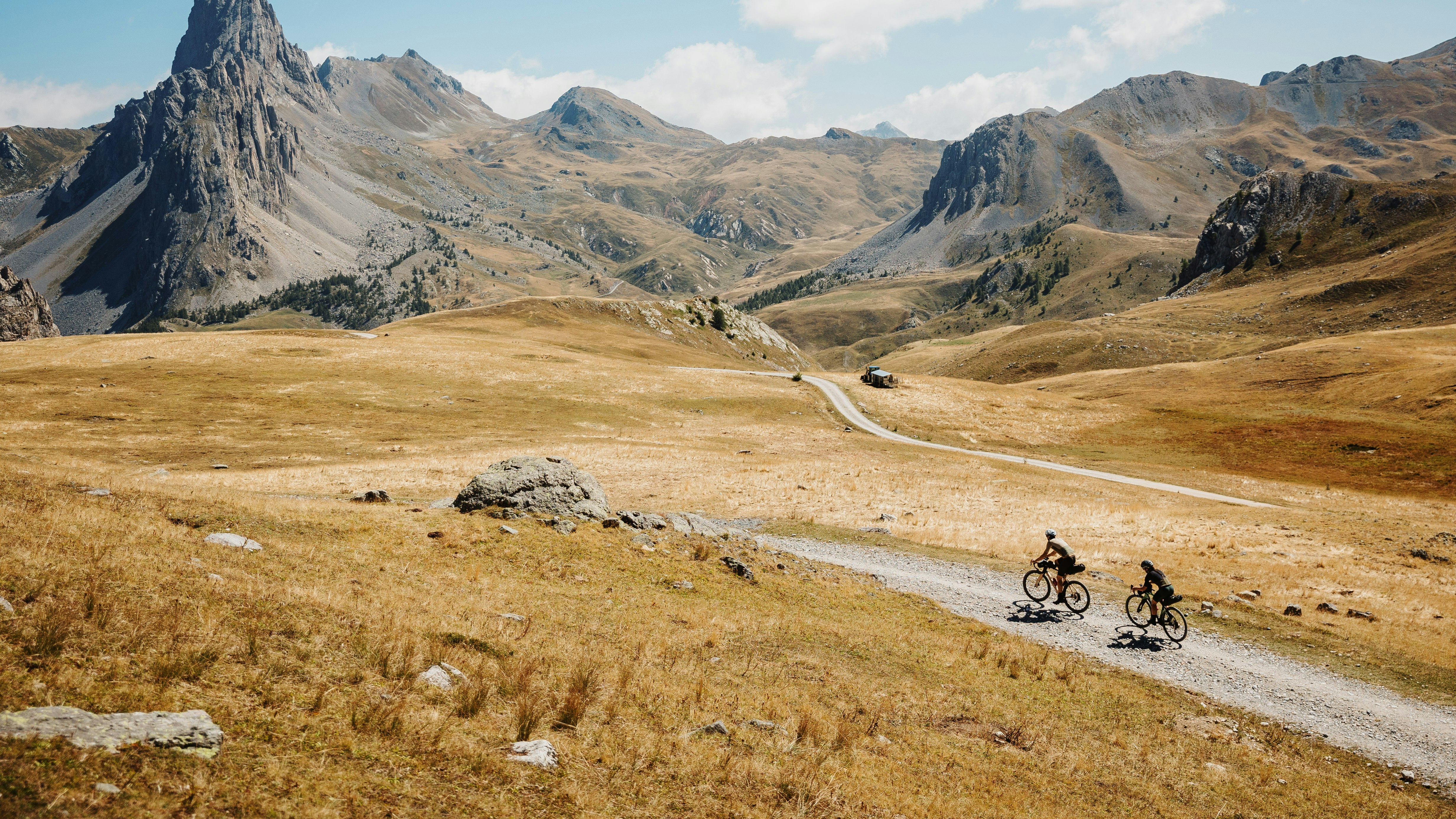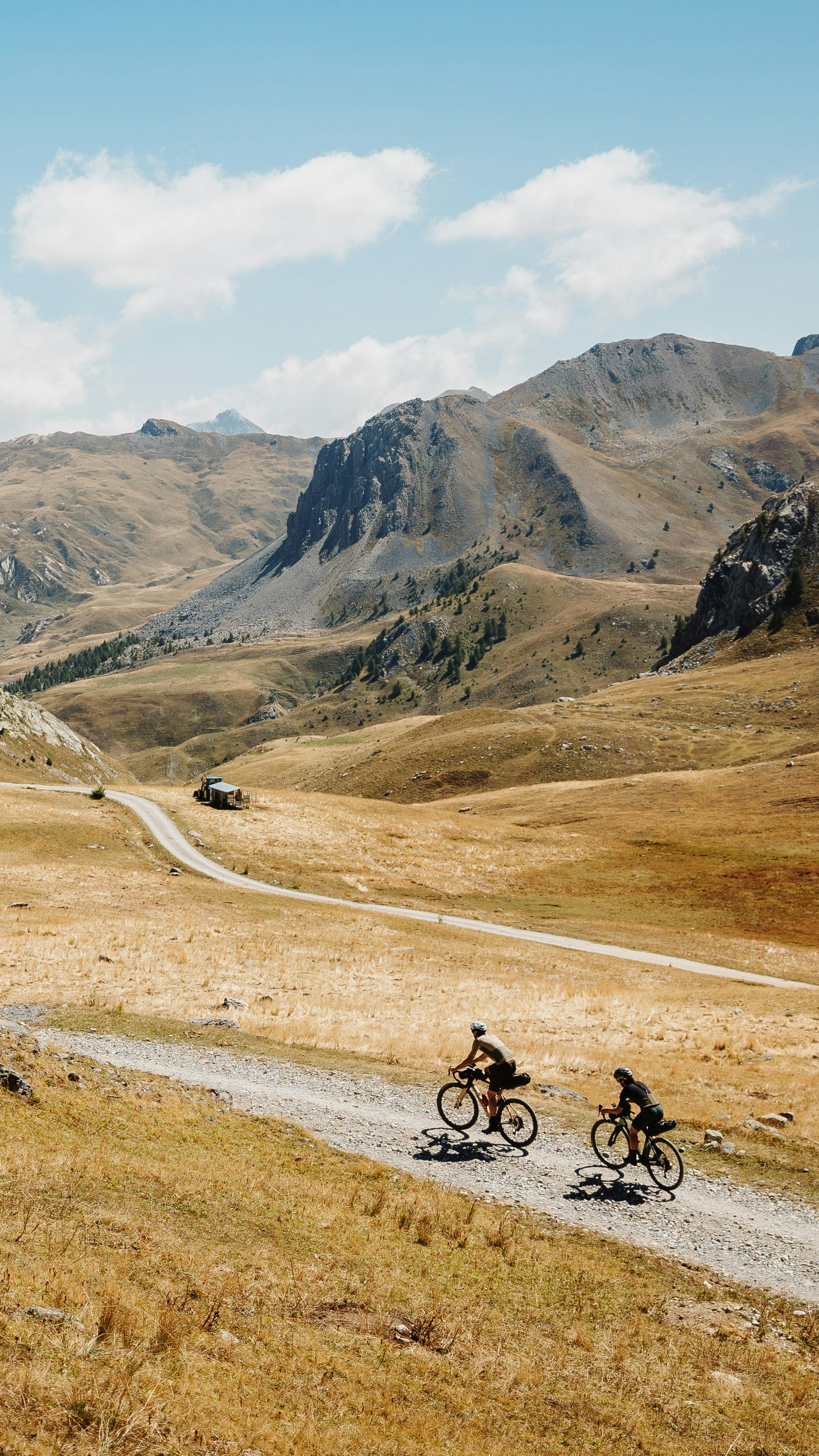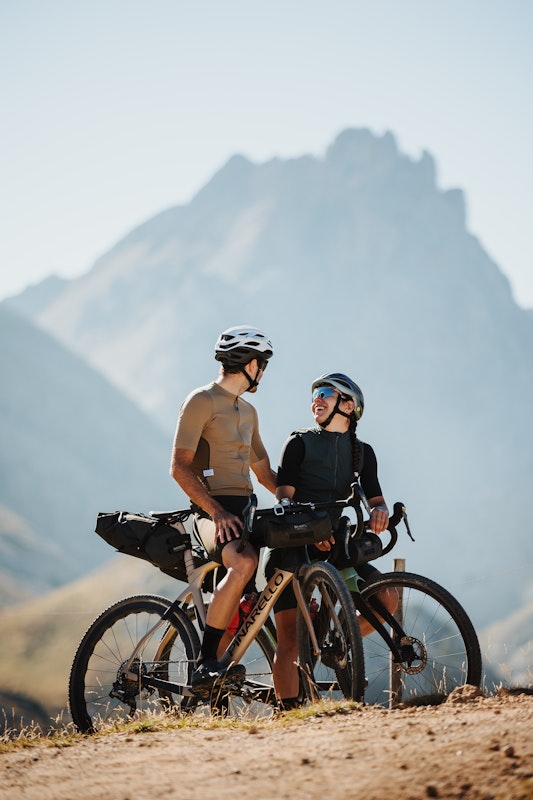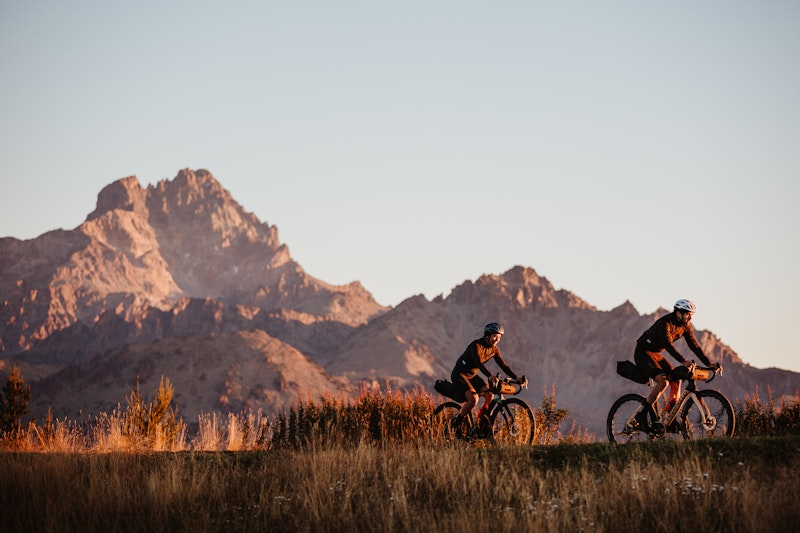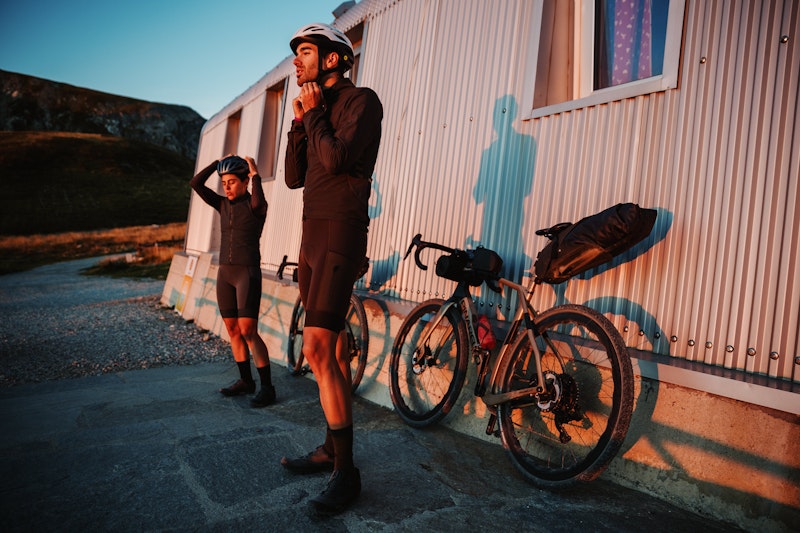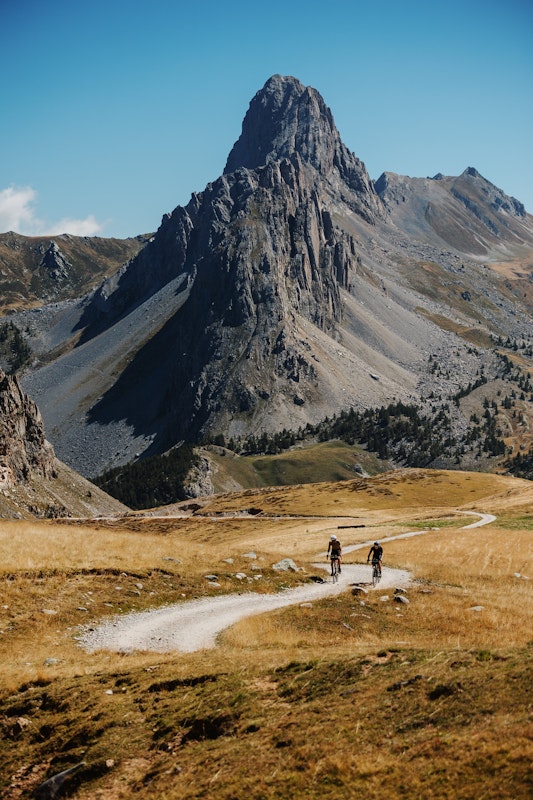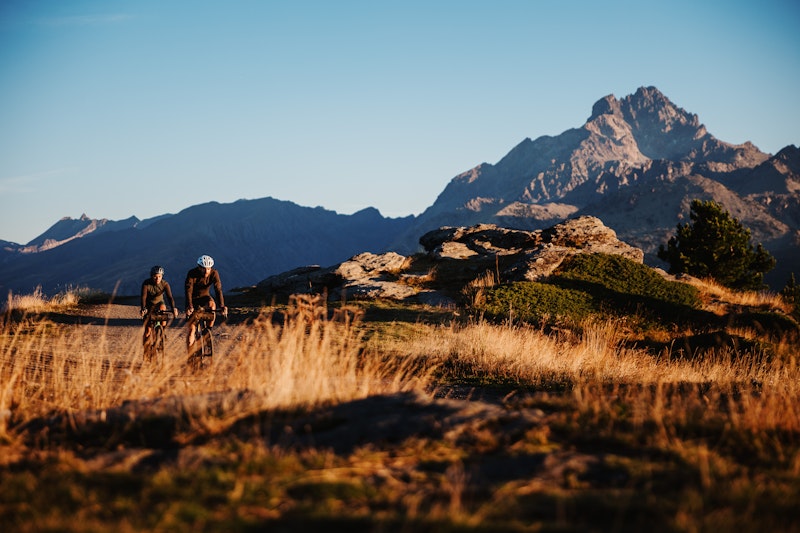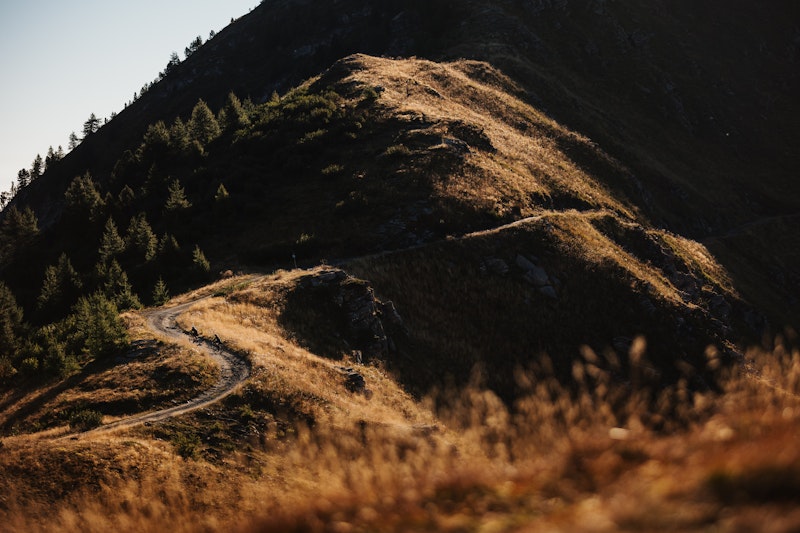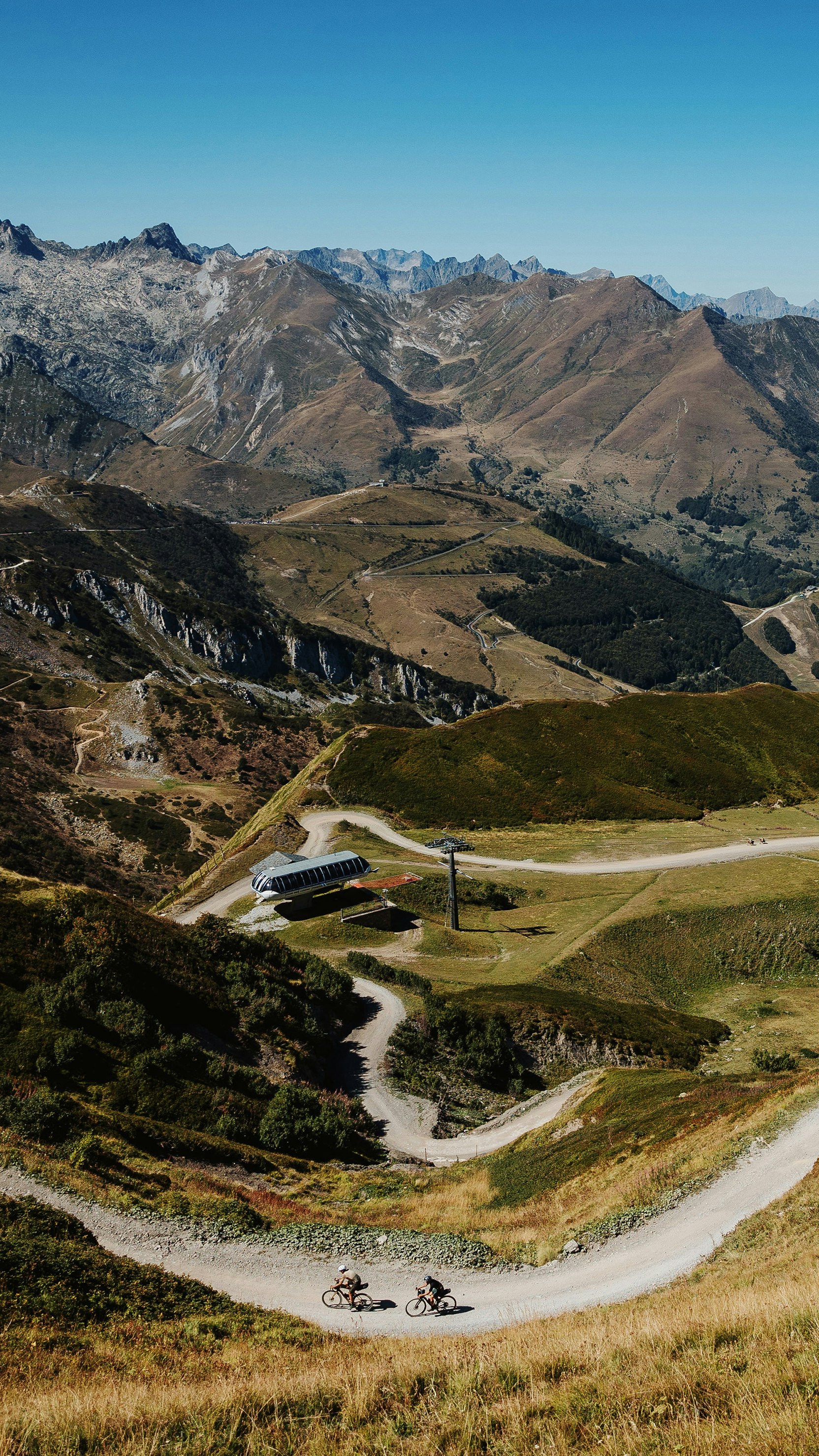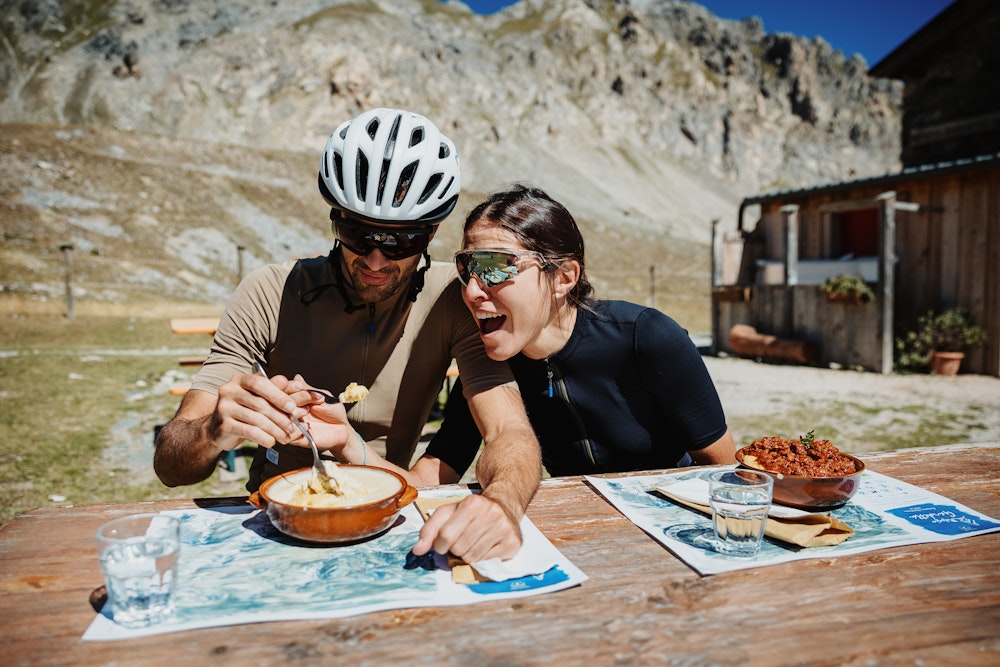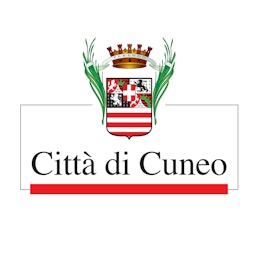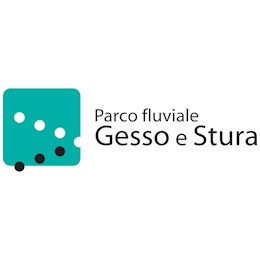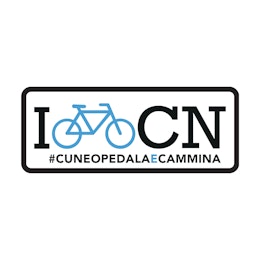Period
May - Oct
Elevation difference
8.800 m
Total Length
343 km
Duration
4/7 Days
W
Alpine Dirt Roads
00
Intro
01
Discovering the Strada dei Cannoni
02
Climbing to the altopiano della Gardetta
03
Sunrise over Fauniera and the Valle delle Meraviglie
04
Grand finale: the Alta Via del Sale
In the silence of the early day, cycling over the ponte Vassallo, we look at our reflection in the water. Along the country roads, all that remains is the whistling of the wheels cutting through the air and the splashing of water in the fountains. And water will be the key element of this journey: the water there is and the water that is lacking. At Busca, we stock up on beverage and food, because from Colletta di Rossana, where the Strada dei Cannoni begins, we will find no more of it until Elva: in between Colle della Ciabra, Colle del Birrone and Colle di Sampeyre. Meanwhile, we catch our breath. Just above Busca after the cappella di Santo Stefano, we cycle as if suspended, overlooking the Alpi Liguri and Alpi Marittime, the road climbs ever so slightly along a pleasant slope: in front of us, at a certain point, we see the plaque dedicated to Marco Pantani. We are on the Colletta di Rossana, to our left the Strada dei Cannoni begins.
A sharp cut, a gap in time: the strip of asphalt we are following enters a deciduous forest. For now, only a few leaves are on the ground, but some are already changing colour, and in a month’s time, this serpentine stretch will be a potpourri of colours: yellow, orange, brown...
In between the plants, the view is over the Valle Varaita: the landscape is almost immaculate, man has left no trace here. The strain begins and our breathing plays its laboured symphony, but this is just the beginning and after the Valmala crossroads things get tougher: the dirt road... At first it is only a cause for happiness: we play with trajectories, lift dust with the bike wheels. At the summit of the Colle della Ciabra, someone tells us about Monte Roccerè and its rock engravings dating back to the Bronze Age. Who knows, maybe one day we’ll return and have a proper look.
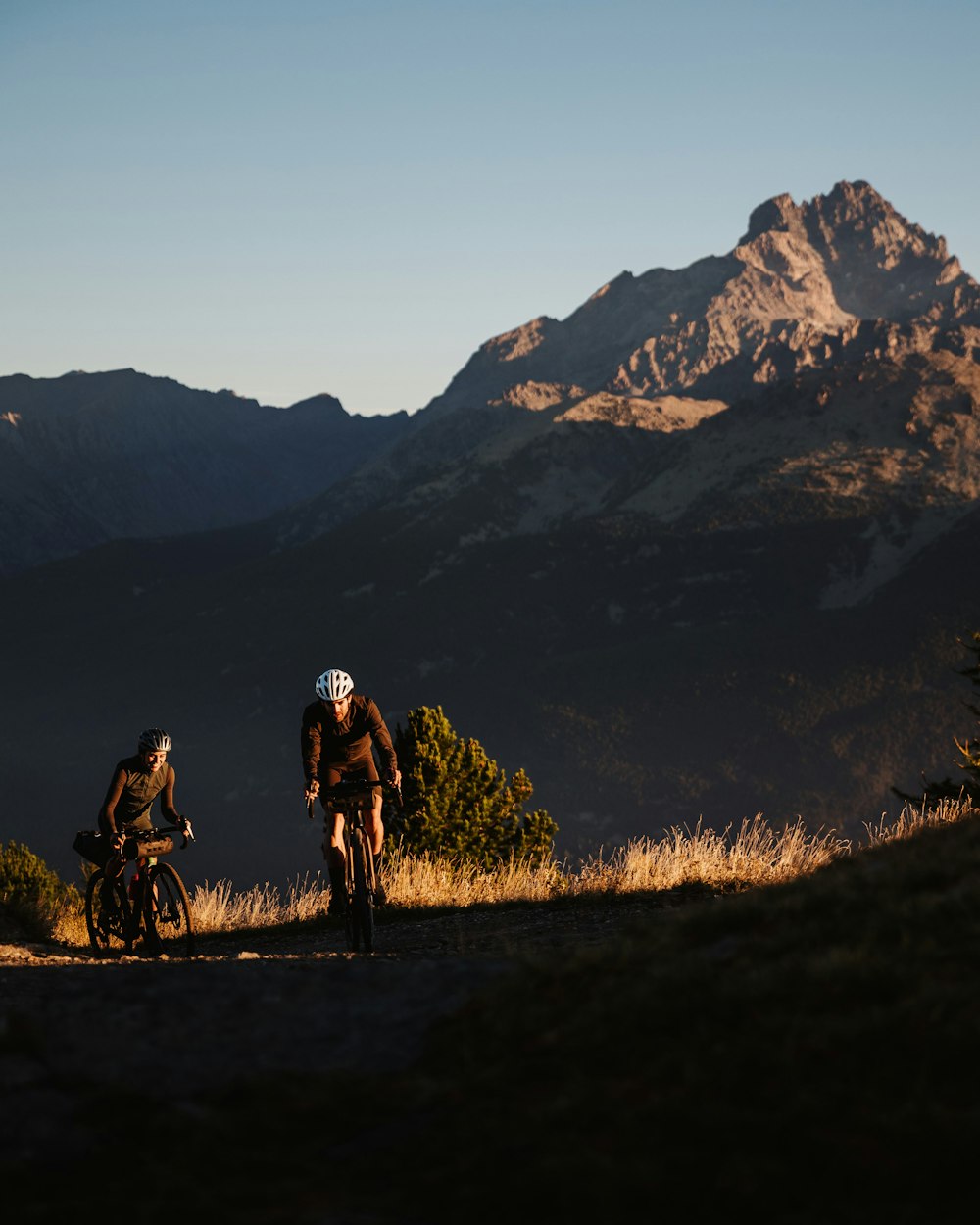
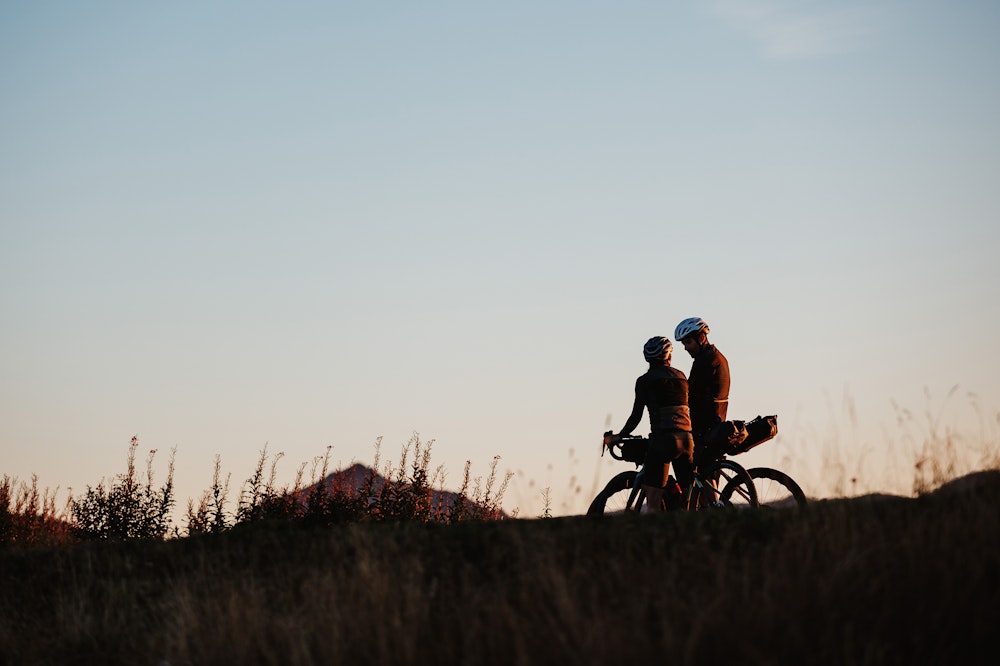
Time to go, after a little snack, we head for the Colle del Birrone. Here the sun beats down, the vegetation thins out and the meadows begin. A slight descent relieves us, or rather just deludes us, before the ascent. At Birrone, the dirt road becomes even more uneven; strength and stamina are required to push the bike forward. The landscape is now more open and our gaze sweeps over the Valle Maira, but there is one thing missing: from here we cannot see the Monviso and the sky seems emptier, almost as if we’ve lost our bearings, so used as we were to having it in sight.
The afternoon lengthens our shadows in a hint of sunset as we tackle the last uphill stretch of this first day: the Colle di Sampeyre. The meadows of the pastures are already yellowing, some groundhogs race from one side to the other; we try to take a photo of them and then set off again, standing up on our pedals, wanting to challenge the groundhogs to set off on a sprint with us. By the side of the road, we see cultivations of medicinal herbs: we are high up, very high, over 2.000 metres. All around the ridges and peaks of these wonderful mountains. It’s evening, but we fantasize about what dawn will be like in a place like this.
But we’d better start concentrating on the road: we need to be focused on the descent towards Elva, not least because it could be dangerous given the tiredness after a day like this. A rapidly changing landscape runs along beside us, and it’s almost a shame to be leaving it behind.
These places, a few years ago, were the natural and human backdrop for a good film by Giorgio Diritti entitled Il vento fa il suo giro, The wind blows round. We think of all the wind we have caught today and who knows what turn the wind is taking now, while Elva is only a few pedal strokes away.
Legend has it that it was founded by four brigands on the run, in search of a hiding place. It may not be hidden these days, but certainly this place is still far from the world and its noise. This is the kingdom of tranquillity, where local customs are still quietly carried out in the same way, and the people who live here all know each other. Amidst the few houses with their ancient appeal, a medieval arch leads us to the church. Inside, since the end of the 15th century, the walls of the presbytery have been illuminated by Hans Clemer’s frescoes, and they’re so famous that they’ve given their own name to the painter, known in art history books by the epithet Maetro d’Elva. Darkness comes and in Elva’s twilight we seek for some rest after our adventures.
One of the most beautiful things about cycling is how it transforms stuff one would never do into something totally ordinary. We liked the sunset over Sampeyre so much that, this morning, on our bikes and with our lights on, we went back there to enjoy the sunrise. The light of dawn tinges of pink everything it touches: the stones, the peaks, the meadows and the clouds in the sky. We take our time and wait from up here for the day to start, warming our hands with the hot tea we brought with us. Around eight o’clock we start to go down the long descent to Stroppo. We speed by the churches, with doors still closed, scattered in the small towns towards the bottom of the valley. We speed past mountain hamlets that are still asleep. These are the first school days and in Stroppo, and from the windows of the Convitto boarding school – a historical reference point for the area and the last institute in the province of Cuneo that provides overnight accommodation for the valley’s students – the jolly hubbub of students can be heard. After a few kilometres we arrive at Ponte Marmora, easily recognisable for its hydroelectric power station; we turn left and head towards Marmora and Canosio. The road runs close to the river, suspended over deep escarpments. At regular intervals we pass through tunnels carved into the rock: the echo of our chatter spreads across the mountains. At Marmora, we turn right towards Canosio, where a village of Indian tents evokes the Native American nights on the Great Plains of the northern United States, in close contact with nature. We would like to stop, but instead we cycle on. There’s a gorge in the valley that leads us to the Piano del Preit: the road up is very exposed and big drops of sweat begin to bead on our foreheads. As we climb towards the pass, the imposing outline of Monte Cassorso appears on our right. The asphalt ends and a stretch of dirt road climbs up to the Altipiano della Gardetta and the Rifugio that takes its name.
It’s the perfect place to have lunch and take a break. This plateau has a geological history showing that, millions of years ago, the sea lapped these slopes and the blue of the sky would have met the blue of the waters: an image that makes us feel very small compared to the venerable majesty of the Earth. Someone tells us that a dinosaur footprint was recently found here and our imagination starts travelling through time again. But it’s our legs now that make us travel and they take us around the Rocca della Meja, to the Colle della Bandia, where military barracks can still be seen, and to the Colle di Valcavera. From here we ascend to Colle Fauniera: a practically vertical road that never seems to finish. We see the summit up there, but it’s as if, like a bad prank, someone keeps moving it a little further from us. But eventually we get there. On the pass, a monument to Pantani commemorates the 1999 stage of the Giro d’Italia. They still talk about that legendary day of cycling, a little further down, at the Rifugio Fauniera.
It’s a magical place. The night-time brings one of the most enchanting starry skies of the Alps, away from any kind light pollution. They tell us that even the sunrise at dawn is spectacular: we will find out in the morning. There are blankets at the entrance to the hut for those who don’t wish to lie down on the lawn and experience these intense moments of observation and meditation. But now it’s the aroma of Castelmagno cheese gnocchi coming from the kitchen that attracts us the most. Serving us generous portions is Marco, the owner of the refuge, who sits at the table with us and tells his stories about mountains and cycling.
Red. Just a colour. The colour of September and October dawns on Fauniera: a deep, bright red after a starry night. As we mount our bikes and ride up to the monument dedicated to Pantani, we notice that someone has wrapped a kerchief around his neck. We salute the Pirata and then dive downhill. It’s a highly technical descent, with very difficult sections: we have in our minds Paolo Savoldelli’s nose dive in that 1999 Giro, but it’s an example that we’d be safer not to follow. The cold air wakes us up from the dreams of last night. Near the Rifugio Carbonetto we are attracted by a curious notice drawn on the asphalt: ‘Turn right for cheeses’. The mountain pasture cheeses produced here are actually more than a temptation. At the bottom of the descent, we pass all the hamlets of the Vallone dell’Arma, as far as Demonte, the birthplace of the writer Lalla Romano. Here we stock up on water and everything else we need to prepare for the hard work expecting us on today’s stage. After skirting a lavender field whose scent takes us back to summer, we tackle the military road to Borgo San Dalmazzo and return up to Limone Piemonte through the Valle Vermenagna. We leave behind us Limone 1400, where all the ski lifts start, and continue the ascent to Colle di Tenda Alto.
The first part of the climb is fairly easy, with the trees providing shelter from the sun: then, as the altitude increases, the vegetation thins out and the woods give way to small shrubs and then to grasslands at the highest point. One particularly hard stretch of the road, at a 10% gradient, wears us out completely. But fortunately, it’s just before reaching the summit, at the Forti del Colle di Tenda. There are six isolated forts, all dominating the southern slope, with the exception of the central fort, facing north. They are stone structures, rectangular or pentagonal in shape, surrounded by moats and accessible by a drawbridge. The most visible is the Central Fort. We stand there, spellbound, looking at it as we stop to rinse our heads and legs with the water from our flasks. The Alta Via del Sale is right there, within cycling reach, but we decide to reserve it for the following day. Now the right thing to do is to sit down at a table at Le Marmotte chalet. We recharge our energies, drink and eat enough to find the strength to tackle the last stretch of ascent to Peirafica. The gradients are actually not too steep, we climb and descend continuously, up a gentle slope that leads to the descent towards Casterino on a dirt road, recently reopened after the serious damage caused by the flood, called Alex, that devastated the Valle Roya and part of the French valleys.
I must say that names, here at least, have a meaning. We are inside the Valley delle Meraviglie, Valley of Wonders, an archaeological site with international standing. These places have been inhabited by man since the dawn of time and the Meraviglie are the marks left on the rocks, evidence of engravings dating from the Neolithic (5th and 4th millennia B.C.) to the Bronze Age (2200-1800 B.C.). A good lesson in palaeontology, before a restoring good night’s sleep.
The following day we wake up early and make our first moves from Casterino: the strain of the past few rides has made our legs sore but the start is gentle, downhill. A sort of entry pass for new challenges. At San Dalmazzo we cross the Route nationale del Colle di Tenda and, after a few kilometres, we turn towards La Brigue, not before refuelling. We know that the cappella di Notre Dame de Fontaines is somewhere around here. We can clearly see it and immediately understand why they call it they call it the Sistine Chappel of the Alps: inside, wonderful frescoes depict the Passion of Christ. Whispering, we exchange impressions of what we see while we are told about the origin of its name. One day the springs of the Briga dried up and the inhabitants promised the Virgin Mary to dedicate a shrine to Her when the waters would start flowing into their lands again. The water returned and the promise was kept. We pass several cyclists, we slipstream for few stretches, then it’s the climb that sets everyone’s own pace. On the ramps, we hear the sound of water from a waterfall and a stream: the effort is still pleasant, at least until we reach the Collardente Pass, on the watershed between France and Italy, near the last perched villages of Liguria.
A little bit of stretching before we tackle the Cima Ventosa, just below the monte Saccarello and Tanarello that seem to be placed there for protection. Lunchtime approaches and we keep our concentration high because the descent to Monesi is on a dirt road and proper manoeuvring is crucial. From here, the ascent into the Bosco delle Navette begins: we need to have lunch first, but a just a light one, lest we are put off the cyclin. Around us a thousand hectares of larch trees, interspersed with beech and silver fir, with the sun’s rays filtering through the trees, creating games of light. This is the southernmost larch forest in the Alps. For centuries, timber was obtained from these forests to build the ships of the Repubblica di Genova, hence the origin of the name. The descent to the Rifugio Don Barbera is a series of diagonals that continuously open up new sceneries: the Rifugio can also be a perfect place to stop and break the journey, if tired or caught in bad weather. But today the sun is still high above us and the white tracks of the Alta Via del Sale are so glaring that we are almost dazzled by them.
In the afternoon we reach the Marguareis karst area: how fascinating are the rocks, their variety, the holes, the shapes, the signs of passing time and weathering! The Colle della Boaria, further on, also surprises us, with a hairpin turn carved into the rock and overlooking the Valle di San Giovanni: we feel a sense of vertigo and slight melancholy because our adventure is coming to an end. We stay there for a few moments looking out in all directions, wiping off our sweat before we set off again. In quick succession, the Colle della Perla and the Colletto del Campanin, at the Limone Piemonte ski facilities, bring us back with a final traverse to the Colle di Tenda. Now it’s all downhill towards Cuneo, on our faces the wind and the smile of who has experienced times they will not easily forget. Once in town, to relax, we chose F’orma, the multi-sensory venue of the Parco Fluviale Gesso e Stura. After days of pushing on bike pedals, walking barefoot on the grass and along the waterways helps us to loosen up our muscles. The evening air smells of autumn and comes from over there, where we’ve just been, in the mountains, where autumn begins.
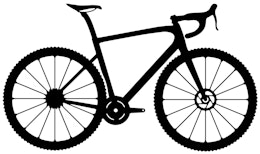
Bike type
Gravel
* informazione Publiredazionale
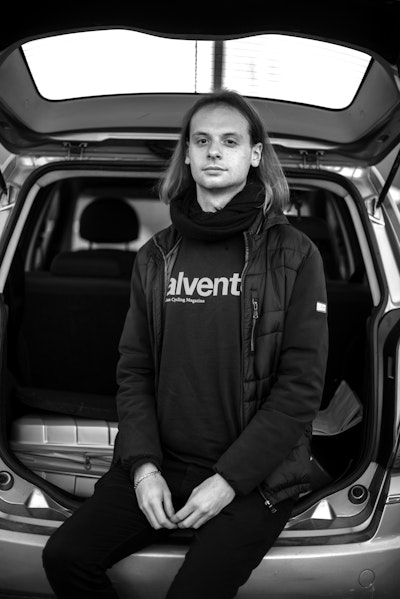
Texts
Stefano Zago
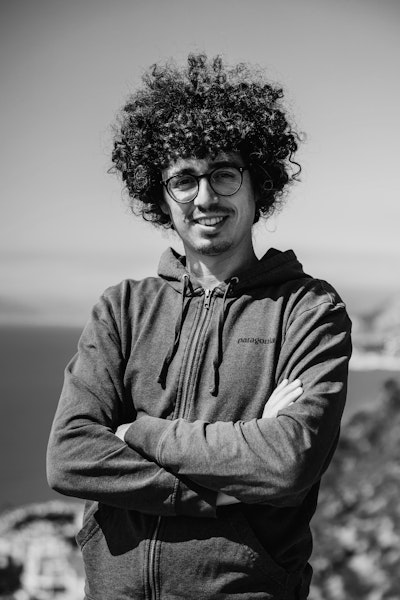
Photos
Nicola Damonte
Cycled with us
Iride Bertone, Aldo Ghiron
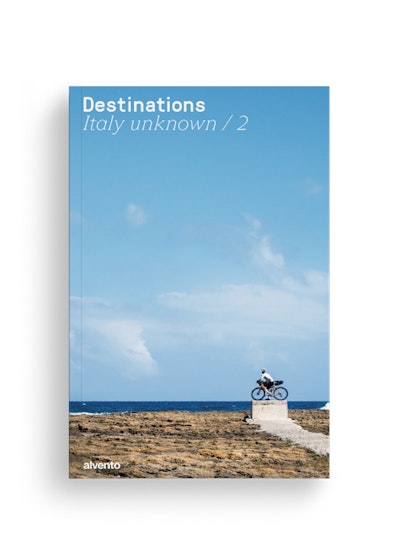
This tour can be found in the super-magazine Destinations - Italy unknown / 2, the special issue of alvento dedicated to bikepacking. 12 little-trodden destinations or reinterpretations of famous cycling destinations.
